Soluble intracellular adhesion molecule-1 secreted by human umbilical cord blood-derived mesenchymal stem cell reduces amyloid-β plaques
- PMID: 22015609
- PMCID: PMC3307982
- DOI: 10.1038/cdd.2011.140
Soluble intracellular adhesion molecule-1 secreted by human umbilical cord blood-derived mesenchymal stem cell reduces amyloid-β plaques
Abstract
Presently, co-culture of human umbilical cord blood mesenchymal stem cells (hUCB-MSCs) with BV2 microglia under amyloid-β42 (Aβ42) exposure induced a reduction of Aβ42 in the medium as well as an overexpression of the Aβ-degrading enzyme neprilysin (NEP) in microglia. Cytokine array examinations of co-cultured media revealed elevated release of soluble intracellular adhesion molecule-1 (sICAM-1) from hUCB-MSCs. Administration of human recombinant ICAM-1 in BV2 cells and wild-type mice brains induced NEP expression in time- and dose-dependent manners. In co-culturing with BV2 cells under Aβ42 exposure, knockdown of ICAM-1 expression on hUCB-MSCs by small interfering RNA (siRNA) abolished the induction of NEP in BV2 cells as well as reduction of added Aβ42 in the co-cultured media. By contrast, siRNA-mediated inhibition of the sICAM-1 receptor, lymphocyte function-associated antigen-1 (LFA-1), on BV2 cells reduced NEP expression by ICAM-1 exposure. When hUCB-MSCs were transplanted into the hippocampus of a 10-month-old transgenic mouse model of Alzheimer's disease for 10, 20, or 40 days, NEP expression was increased in the mice brains. Moreover, Aβ42 plaques in the hippocampus and other regions were decreased by active migration of hUCB-MSCs toward Aβ deposits. These data suggest that hUCB-MSC-derived sICAM-1 decreases Aβ plaques by inducing NEP expression in microglia through the sICAM-1/LFA-1 signaling pathway.
Figures
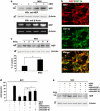
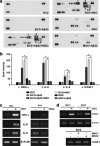
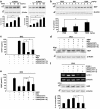

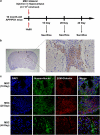

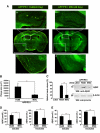
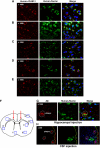

Similar articles
-
GDF-15 secreted from human umbilical cord blood mesenchymal stem cells delivered through the cerebrospinal fluid promotes hippocampal neurogenesis and synaptic activity in an Alzheimer's disease model.Stem Cells Dev. 2015 Oct 15;24(20):2378-90. doi: 10.1089/scd.2014.0487. Epub 2015 Aug 19. Stem Cells Dev. 2015. PMID: 26154268 Free PMC article.
-
Umbilical Cord Mesenchymal Stem Cells Conditioned Medium Promotes Aβ25-35 phagocytosis by Modulating Autophagy and Aβ-Degrading Enzymes in BV2 Cells.J Mol Neurosci. 2018 Jun;65(2):222-233. doi: 10.1007/s12031-018-1075-5. Epub 2018 May 29. J Mol Neurosci. 2018. PMID: 29845511
-
Effect of growth differentiation factor-15 secreted by human umbilical cord blood-derived mesenchymal stem cells on amyloid beta levels in in vitro and in vivo models of Alzheimer's disease.Biochem Biophys Res Commun. 2018 Oct 12;504(4):933-940. doi: 10.1016/j.bbrc.2018.09.012. Epub 2018 Sep 14. Biochem Biophys Res Commun. 2018. PMID: 30224067
-
Thrombospondin-1 secreted by human umbilical cord blood-derived mesenchymal stem cells rescues neurons from synaptic dysfunction in Alzheimer's disease model.Sci Rep. 2018 Jan 10;8(1):354. doi: 10.1038/s41598-017-18542-0. Sci Rep. 2018. PMID: 29321508 Free PMC article.
-
Aβ-degrading enzymes: potential for treatment of Alzheimer disease.J Neuropathol Exp Neurol. 2011 Nov;70(11):944-59. doi: 10.1097/NEN.0b013e3182345e46. J Neuropathol Exp Neurol. 2011. PMID: 22002425 Review.
Cited by
-
Mesenchymal stem cells can prevent alterations in behavior and neurogenesis induced by Aß25-35 administration.J Mol Neurosci. 2015 Apr;55(4):1006-13. doi: 10.1007/s12031-014-0457-6. Epub 2014 Nov 12. J Mol Neurosci. 2015. PMID: 25384918
-
GDF-15 secreted from human umbilical cord blood mesenchymal stem cells delivered through the cerebrospinal fluid promotes hippocampal neurogenesis and synaptic activity in an Alzheimer's disease model.Stem Cells Dev. 2015 Oct 15;24(20):2378-90. doi: 10.1089/scd.2014.0487. Epub 2015 Aug 19. Stem Cells Dev. 2015. PMID: 26154268 Free PMC article.
-
Mechanisms of Amyloid-β Peptide Clearance: Potential Therapeutic Targets for Alzheimer's Disease.Biomol Ther (Seoul). 2012 May;20(3):245-55. doi: 10.4062/biomolther.2012.20.3.245. Biomol Ther (Seoul). 2012. PMID: 24130920 Free PMC article. Review.
-
Advances of tooth-derived stem cells in neural diseases treatments and nerve tissue regeneration.Cell Prolif. 2019 May;52(3):e12572. doi: 10.1111/cpr.12572. Epub 2019 Feb 3. Cell Prolif. 2019. PMID: 30714230 Free PMC article. Review.
-
Umbilical Cord Mesenchymal Stem Cells Conditioned Medium Promotes Aβ25-35 phagocytosis by Modulating Autophagy and Aβ-Degrading Enzymes in BV2 Cells.J Mol Neurosci. 2018 Jun;65(2):222-233. doi: 10.1007/s12031-018-1075-5. Epub 2018 May 29. J Mol Neurosci. 2018. PMID: 29845511
References
-
- Querfurth HW, LaFerla FM. Alzheimer's disease. N Engl J Med. 2010;362:329–344. - PubMed
-
- Miller G. Pharmacology. The puzzling rise and fall of a dark-horse Alzheimer's drug. Science. 2010;327:1309. - PubMed
-
- Secco M, Zucconi E, Vieira NM, Fogaca LL, Cerqueira A, Carvalho MD, et al. Multipotent stem cells from umbilical cord: cord is richer than blood! Stem Cells. 2008;26:146–150. - PubMed
-
- Oh W, Kim DS, Yang YS, Lee JK. Immunological properties of umbilical cord blood-derived mesenchymal stromal cells. Cell Immunol. 2008;251:116–123. - PubMed
Publication types
MeSH terms
Substances
LinkOut - more resources
Full Text Sources
Medical
Molecular Biology Databases
Miscellaneous

